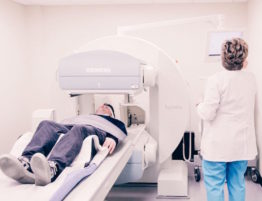The best way to avoid litigation for the devastating injuries that can result from a motorcycle accident is to never be injured in a motorcycle accident in the first place. Easier said than done? Well, the bad news is that motorcycle riders involved in accidents face a much greater risk of injury than automobile drivers, and motorcycle riders can never be kept completely safe from injury in an accident. The good news is that developments in protective equipment can make motorcycle riders much safer than in the past, provided they take advantage of those developments. If you or your loved one has suffered catastrophic injuries as the result of a motorcycle accident, consult an attorney to learn your rights to compensation. A lawyer experienced in motorcycle accident litigation can help you learn what your rights are.
Protective clothing and equipment for motorcycle riders serve a number of purposes:
- Injury protection;
- Protection from the elements, such as wind, rain, and sun;
- Visibility to other motorists, through the use of color or reflective material.
Helmets
Clearly the most important piece of motorcycle equipment, safety helmets save lives by reducing the extent of head injuries in the event of a crash. Unhelmeted injured motorcyclists are three times as likely to suffer a brain injury as helmeted injured motorcyclists. Your helmet should fit comfortably and snugly, and be fastened at all times when riding. When shopping for a helmet, look for a Department of Transportation label on the helmet (it will read “DOT”), which is the manufacturer’s certification that the helmet conforms to federal safety standards.
Gloves
Durable, non-slip gloves, made of leather or special fabric with grip strips, allow a motorcycle rider to keep a firm grip on the handlebars and controls. Gloves can also serve to keep air out of a rider’s sleeves, and reduce cuts and abrasions in the event of a fall. You can find appropriate gloves for any type of riding weather.
Footwear
Proper footwear is essential to protect a motorcycle rider’s feet, ankles, and lower legs. Leather boots are the best choice, but durable athletic shoes that cover the ankles are good as well. Riders should avoid sandals and sneakers, which provide little protection to the feet and ankles. No matter what footwear you choose, avoid dangling laces that can get in the way.
Bright Clothing & Reflective Material
Many car-versus-motorcycle crashes happen because the car driver failed to see the motorcycle in time to avoid the crash. To ensure greater visibility to other motorists, a motorcycle rider’s clothing, especially the upper body clothing, should be brightly colored. Some riders wear lightweight reflective orange or yellow vests over their jackets, which make them much more conspicuous on the road, especially at night. Reflective material can also be applied to the helmet and the motorcycle itself.
Eye Protection
Since most motorcycles don’t have windshields, riders must protect their eyes against insects, dirt, rocks, or other airborne materials. Even the wind can cause the eyes to tear and can blur vision, which is dangerous. Good vision is imperative when riding. Choose good quality goggles, glasses with plastic or safety lenses, or a helmet equipped with a face shield. Goggles, glasses, and face shields should be scratch free, shatter proof, and well ventilated to prevent fog buildup. Only clear shields should be used at night, since tinted shields reduce contrast and make it more difficult to see. Even if your motorcycle has a windshield, eye protection is recommended.
Armor And Protective Clothing
The most frequent injury suffered by motorcyclists in an accident is abrasion, often called “road rash.” A wide range of apparel provides protection from abrasion, including some very effective synthetic materials that have been offered in recent years. Some types of impact resistant material, or armor, are being incorporated into jackets, suits and even gloves and boots. Armor is designed to protect the motorcyclist against everything from bruising and fractures of the extremities, avert life-threatening injuries to the torso, and reduce spinal injuries. Leather, which is used in garments to cover virtually all of a motorcyclist’s body, can also be effective in preventing the serious deep abrasions that can result from contact with the road.
Airbags
Strange as it may sound, an airbag for motorcycles may find its way into the marketplace soon, whether installed on the bike itself or as a vest, worn by the rider or passenger, which inflates upon impact. An attorney experienced in handling motorcycle accident and catastrophic injury cases will know how to uncover all of the parties who may be responsible for your injuries.





